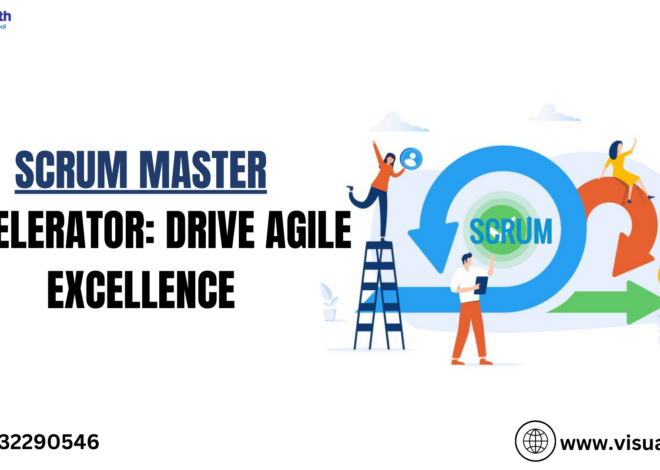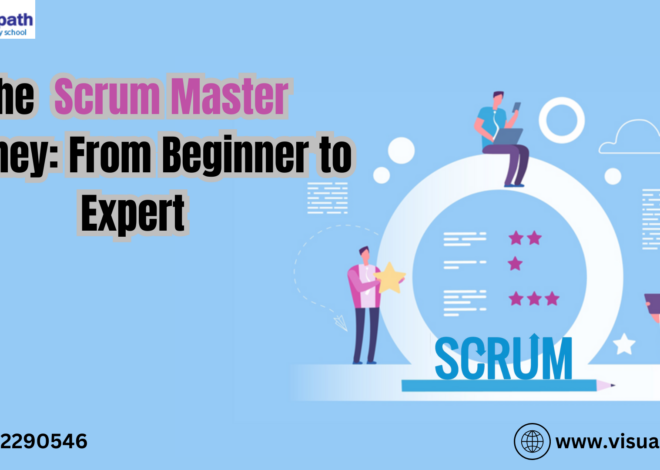Scrum Master: Waterfall to Agile: Transitioning to Scrum for Success
Scrum Master Course The shift from traditional Waterfall methodologies to Agile frameworks like Scrum has become a transformative journey for many organizations aiming to achieve flexibility and rapid delivery. Starting with a Scrum Master Training is one of the most effective ways to understand this transition and implement it successfully. By embracing Agile principles, teams can adapt to changing business needs, foster collaboration, and deliver value incrementally, making it a compelling choice for modern enterprises.
Understanding Waterfall vs. Agile
Waterfall is a linear project management approach where tasks are completed sequentially—from requirements gathering to design, implementation, testing, and maintenance. While it provides clear structure, its rigidity often becomes a limitation in dynamic environments. Delays in one phase can cascade into subsequent stages, and accommodating changes mid-project can be challenging.
In contrast, Agile embraces an iterative process. Scrum, one of the most popular Agile frameworks, breaks work into manageable sprints, typically lasting 1-4 weeks. Teams deliver usable increments of the product, gather feedback, and iterate, allowing flexibility and customer involvement throughout the development cycle. Enrolling in a Scrum Master Training program equips professionals with the skills to lead these iterative processes efficiently.
Transitioning to Scrum: Key Steps
Transitioning from Waterfall to Scrum involves a cultural and procedural shift. Here are the steps for a successful transition:
- Understand Agile Principles: The first step is understanding the foundational values of Agile, such as customer collaboration, responsiveness to change, and delivering working solutions. A Scrum Master Certification Training provides a thorough grounding in these principles.
- Establish a Scrum Framework: Identify roles like Scrum Master, Product Owner, and the Development Team. Scrum introduces ceremonies like Sprint Planning, Daily Stand-ups, Sprint Reviews, and Retrospectives to foster continuous improvement.
- Educate Stakeholders: Transitioning requires buy-in from all levels of the organization. Stakeholders should understand the benefits of Agile and how their roles might evolve.
- Start Small: Pilot Scrum on a small project to learn and adapt before scaling across teams or departments.
- Use Tools and Techniques: Scrum thrives on transparency and collaboration. Tools like Jira, Trello, and Azure DevOps facilitate backlog management, sprint tracking, and team communication.
- Invest in Training: Comprehensive Scrum Master Training ensures team leaders can guide the process effectively, resolve impediments, and foster an Agile mindset.
Benefits of Transitioning to Scrum
Transitioning to Scrum offers numerous benefits that contribute to project success and organizational growth:
- Improved Flexibility: Scrum’s iterative approach allows teams to pivot based on feedback or market changes, unlike the rigid Waterfall structure.
- Faster Delivery: By breaking work into sprints, teams deliver usable increments frequently, reducing time-to-market.
- Enhanced Collaboration: Scrum emphasizes teamwork and open communication through daily stand-ups and retrospectives.
- Increased Transparency: Progress is visible through sprint backlogs and burn-down charts, fostering accountability.
- Customer-Centric Development: Frequent reviews ensure that the final product aligns closely with customer expectations.
These benefits highlight why many organizations invest in Scrum Master Certification Training to ensure the transition is smooth and impactful.
Challenges in the Transition
Despite its advantages, transitioning to Scrum is not without challenges:
- Resistance to Change: Teams accustomed to Waterfall may initially resist the iterative nature of Scrum.
- Role Clarity: Understanding new roles like Scrum Master and Product Owner may take time.
- Cultural Shift: Agile requires a culture of trust, openness, and continuous learning, which may be difficult to establish.
- Training Needs: Without proper training, teams may misapply Scrum principles, leading to inefficiencies.
Organizations can overcome these challenges by emphasizing education and support. A Scrum Master Course prepares leaders to address resistance, foster collaboration, and guide teams through the transformation.
Real-Life Success Stories
Many organizations have reaped the rewards of transitioning to Scrum. For instance, a global tech company that adopted Scrum reported a 30% reduction in time-to-market and improved customer satisfaction. Similarly, a mid-sized manufacturing firm increased team productivity by 40% after implementing Scrum and investing in Scrum Master Training for their managers.
Conclusion
Transitioning from Waterfall to Agile, specifically using Scrum, is a powerful step toward achieving greater efficiency, flexibility, and customer satisfaction. The process involves cultural shifts, training, and iterative learning, but the rewards are well worth the effort. Investing in a Scrum Master Course not only equips professionals with the necessary tools and knowledge but also ensures that teams are guided effectively during the transition.
By embracing Agile principles and leveraging the strengths of Scrum, organizations can position themselves for success in today’s dynamic business environment. Whether you’re a seasoned manager or a budding leader, Scrum Master Certification Training can help you become a pivotal force in driving Agile transformations and unlocking new levels of productivity and innovation.
Visualpath – Learn Scrum Master Course by 10+ year’s experienced real-time experts. For free demo Enrol Course becomes a Scrum Master Course in Hyderabad. Training from industry experts and gain hands-on experience. Accessible globally, including in the USA, UK, Canada, Dubai, and Australia. With daily recordings and presentations available for later review. To book a free demo session, for more info, call: +91-9989971070.
Course Covered: Jira, Scrumwise, VivifyScrum, Quickscrum, Trello, Asana, Collaboration, Axosoft, Nutcache,
Attend free Demo
Call Now: +91-9989971070
WhatsApp: https://www.whatsapp.com/catalog/919989971070
Visit: https://www.visualpath.in/online-scrum-master-course.html
Visit our Blog: https://visualpathblogs.com/




